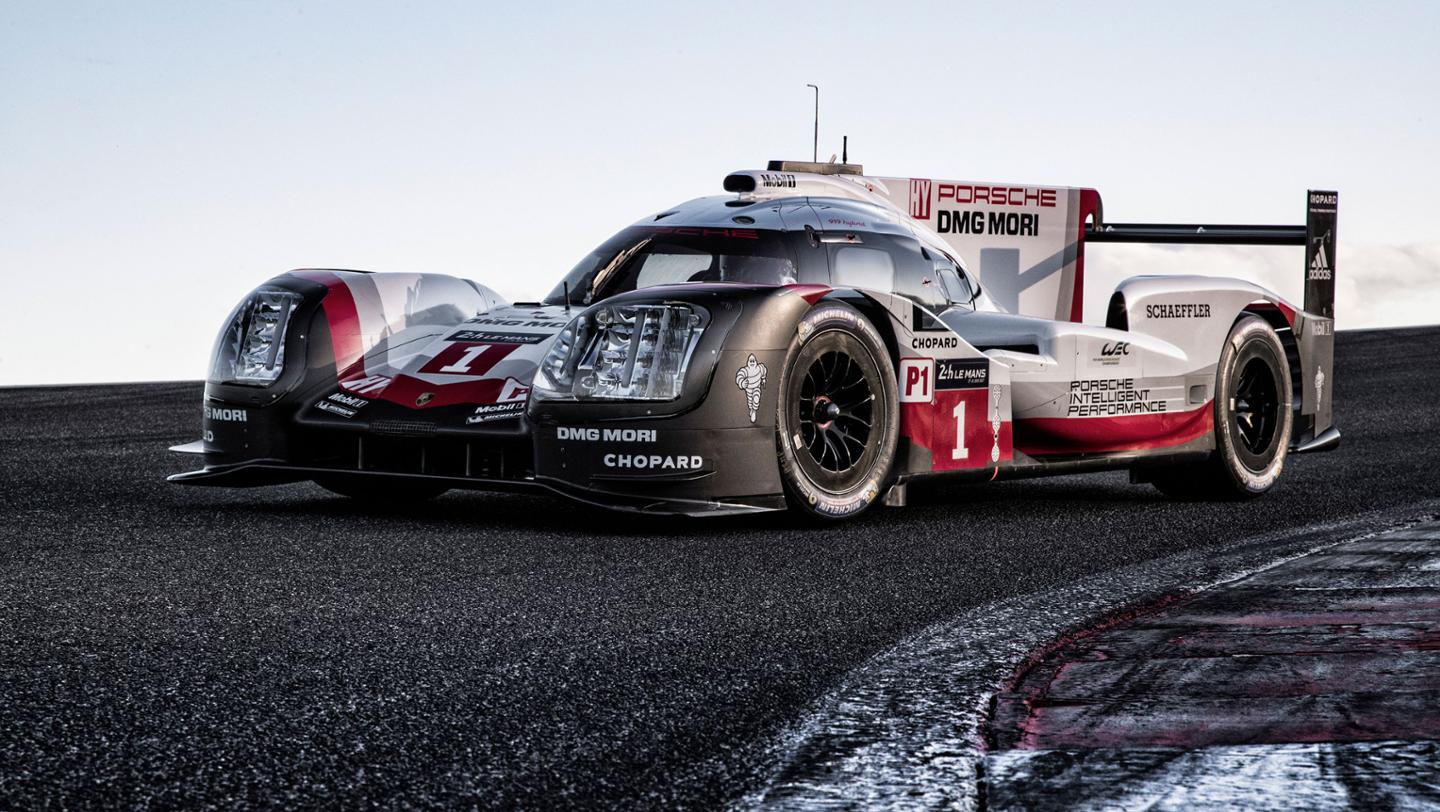

With Toyota hot on their heals, Porsche, last year’s 24 Hours of Le Mans champions, have stepped up efforts to see that their title stays in Stuttgart. They’ve tipped their hand with the introduction of the 2017 Porsche 919 Hybrid, a car that shares a carbon fiber monocoque with last year’s model, and little else. The manufacturer says that 60%-70% of the racer has been redesigned for this year’s competition. In this video, you can see the 2017 car being put through its paces on track at Monza in the day and night, showing what it’s got to its competitors.
Regulations for this year’s series have been changed to make cars safer. The new rules have made the 919 Hybrid less aero sensitive, making for time loss of 3- to 4-seconds per lap, according to Porsche. They look to combat this by strengthening the car’s powertrain in the future, reworking the 500+ horsepower 2.0L V4 engine that pairs with the 400 horsepower electric motors up front. This should put them right back towards the top depending on conditions.
Porsche has went with a truly inventive approach to the Kinetic Energy Recovery System (KERS). Thanks to the technology, the hybrid system can recover and store energy to maximize output.
Their words:
Approximately 60 per cent of the recovered energy comes from the KERS (Kinetic Energy Recovery System) on the front-axle brakes. The remaining 40 per cent is generated by the exhaust energy recovery system. An average of 80 per cent of the braking energy recovered from the front axle is immediately converted to drive energy. If the combustion engine was required to supply this electrical power, it would need to boost its output by over 100 hp (74 kW), which would increase the fuel consumption of the 919 by more than 20 per cent. At Le Mans, this would equate to an extra litre of fuel per lap. A further advantage of the highly efficient recuperation system is that it enables the 919 to perform with smaller and lighter brakes – a characteristic that not only reduces weight, but also air resistance, as smaller brakes require less cooling air.
To recover exhaust energy, a small turbine is fitted in the exhaust tract. This turbine runs at a speed of more than 120,000 rpm, powering a generator. Just like the energy recovered from the front brakes, the energy generated is stored in the lithium-ion battery until it is needed. The driver can access this stored energy on demand at the push of a button – using it to boost the car as it speeds out of a cornering manoeuvre while simultaneously replenishing the energy from the exhaust gas generated during acceleration. To ensure that the turbine functions just as efficiently at lower speeds, when exhaust pressure is low, the turbine features variable turbine geometry. In spite of the sophisticated technology on board, the engineering team was still able to achieve a weight reduction in the exhaust system.
TL;DR: KERS transforms an average of 80% of braking energy to drive energy, reducing the load on the combustion engine and reallocating it to the hybrid powertrain. It’s then recovered and can be accessed by the push of a button from the driver.
Regardless of the crazy tech, it’s pure entertainment to watch it around track. See it here as it blasts through Monza with glowing brakes and perfect noises to get you excited for the 2017 WEC season.
